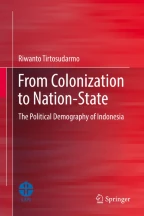
Prior and following the step-down of Suharto in 1998, Indonesia has been rocked by a series of violent conflicts. The first large violent conflict broke out in December 1996 in the Sanggau Ledo subdistrict in Sambas, West Kalimantan, between Madurese migrants and local Dayaks. Following the forced resignation of Suharto in May 1998, social, religious, and ethnic conflict has become a seemingly permanent feature of the post-Suharto political landscape. In the series of communal conflicts, migrant populations have always been involved. In many cases, entire migrant communities have been transformed into victims forced to leave their settlement areas, such as the Madurese in West and Central Kalimantan and the Butonese in Ambon, Maluku (Spice Islands). The involvement of migrants in conflict with the local population of differing ethnic backgrounds exposes the serious question of the relationship between migration and ethnic conflict. A recent study on the anatomy of violence in Indonesia in the last 10 years found that communal and separatist violence caused the greatest number of fatalities, accounting for 77% and 22%, respectively. While social violence was not uncommon during the Suharto regime, social violence and fatalities increased dramatically during the period of transition to democracy, reaching its peak in 1999–2000. The study also shows that among communal violence, ethnic religion migration-related violence alone contributed to around 52% of total deaths in social violence.
This is a preview of subscription content, log in via an institution to check access.
eBook EUR 117.69 Price includes VAT (France)
Softcover Book EUR 158.24 Price includes VAT (France)
Hardcover Book EUR 158.24 Price includes VAT (France)
Tax calculation will be finalised at checkout
Purchases are for personal use only
See Anatomy of Social Violence in the Context of Transition : The case of Indonesia 1990–2001, by Mohammad Zulfan Tadjoeddin (Jakarta: United Nations Support Facility for Indonesian Recovery UNSFIR), March 2002.
Kutai District has become the main destination for transmigrants to East Kalimantan, receiving almost 50% of the provincial total. The official statistics from the Department of Transmigration show that the number of transmigrants resettled during the New Order period is as follows: Pelita I (1969–1973) 1775 families, Pelita II (1974–1978) 3311 families, Pelita III (1979–1983) 11,878 families, Pelita IV (1984–1988) 15,179 families, Pelita V (1989–1993) 16,525 families, and Pelita VI (1994–1997) 14,054 families (Tirtosudarmo 1998).
See the study by Cik Hasan Bisri, Kalola : Sebuah Desa yang Pernah Ditinggalkan banyak Penghuninya (Kalola : A Village Abandoned by Its People), 1985.
Lineton (1975a, b, 23) provides an interesting comment on Kahar Muzakkar’s rebellion against the central government: “the most important aim of the rebellion has in fact been achieved: all the offices of government, from the lowest level of administration up to the provincial governor, are now filled by local born people.”
In the statistical book Kabupaten Wajo Dalam Angka 1998, published by the District Level Bureau of Statistics, there is not a single weaving industry remaining in the Wajo District.
Lineton (1975a, b, 1) also observes similar phenomena: “the sending and the receiving areas are seen to be parts of a single society, each of which influences and is in turn affected by the other.” In the case of Bugis migration to Jambi, for instance, Lineton describes a place that “provides opportunities for economic and political advancement which are absent or limited in the Bugis homeland.” He adds: “It is possible indeed that migration is necessary for the continued functioning of many of the institutions of Bugis society, in particular the system of social stratification and political domination by aristocratic elite” (ibid, p. 3).
The results of the 2000 population census, however, proved that his judgment was incorrect. The local Dayak group comprises less than 10%, while the Javanese comprise 30%, the Bugis 18%, the Banjar 14%, and the Kutai 9% (Biro Pusat Statistik 2002).
A young local NGO leader in Samarinda, however, argues that the formation of FPKMT represents only the aspirations of a few elites, but not those of the common people in East Kalimantan.